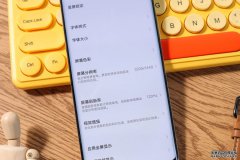2019山西益昌升精品推荐纯铜祥龙如意
藏品名称:纯铜祥龙如意
Collection Name: Pure Tongxianglong Ruyi
藏品规格:285mm*65mm*60mm (以实物为准)
Collection Specification: 285 mm * 65 mm * 60 mm (subject to physical object)
藏品简介:如意是一种象征吉祥的器物,自古就得到了文人雅士的喜好。直至今日,一些集藏古玩小品的藏家,仍对其情有独钟。追究缘由,简单地说,一是如意制作很讲究,不失为一件艺术品;二是如意虽小但却处处能让人如意,自然要图个吉利。缘于搔杖。如意,古人挠痒的搔杖。背痒,手不可及,以搔杖挠之,可如人意,故谓。迄今发现制作年代最早的如意,与今天的“痒痒挠”无异。出土于山东曲阜鲁国故城遗址的牙雕搔杖,残长约40厘米,直柄,饰有三角云纹,杖首是一屈指作抓痒状的手掌,上饰卷云纹,柄端雕一兽头。“如意”之名,初见于公元370年晋人王嘉撰述的《拾遗记》。该书涉及如意的文字有两段:吴主孙权见潘夫人画像,“喜而以虎魄如意抚之”;孙权之子孙和,“月下舞水精如意”。“虎魄”即“琥珀”,一种植物树脂的化石,性脆,硬度极低,摩擦带电;“水精”即“水晶”,一种呈六方柱状的石英石,性寒。二者皆不是制作搔杖的佳材,而且,战国晚期的搔杖残长40厘米,传世和出土的天然琥珀或水晶雕刻品,超过20厘米,已属罕见。由此推论,王嘉的以“虎魄”、“水精”藉之于如意,除了显扬帝王生活的奢侈外,也透露出一个信息,如意发展到此时,已不再仅仅是搔痒用具了。
Collection Description: Ruyi is a symbol of auspiciousness. It has been the favorite of literati and refined scholars since ancient times. To this day, some collectors of antique sketches still have a special fondness for them. To find out the reasons, in short, the first is that the production is exquisite and can be regarded as a work of art; the second is that although the production is small, it can make people happy everywhere, and naturally it is necessary to make good fortune. Because of scratching sticks. As you wish, the ancients scratched their scratching sticks. Back itching, hands out of reach, scratching with a stick, can be satisfactory, so to speak. So far, we have found that the earliest successful production age is the same as today's "itching and scratching". The toothcarved scratch stick unearthed at the ruins of the ancient city of Qufu, Shandong Province, is about 40 cm long with a straight handle and trigonometric moire. The head of the scratch stick is a scratch-like palm with a flexed finger, with a curly moire on it and an animal head carved at the end of the handle. The name of "Ruyi" was first found in the Records of Picking up Remnants written by Wang Jia, a Jin Dynasty man in 370 A.D. There are two passages in the book: Wu Zhongsun Quan's portrait of Mrs. Pan, and Sun Quan's descendants. "Hu Bo" is "amber", a kind of plant resin fossil, brittle, extremely low hardness, friction charged; "water essence" is "crystal", a kind of quartz is hexagonal columnar, cold. Neither of them is a good material for making scratching sticks. Moreover, the scratching sticks of the late Warring States period are 40 centimeters long. Natural amber or crystal carvings handed down and unearthed, which exceed 20 centimeters, are rare. Therefore, Wang Jia's "tiger spirit" and "water essence" are used to express his wishes. In addition to highlighting the luxury of the emperor's life, Wang Jia also reveals a message. At this time, wishful development is no longer just a tickling tool.

“如意”是一种象征祥瑞的器物。据有关资料记载,此物远在东汉时就已有之,在清朝时,已成为宫廷的珍宝之一。它的造型是由云纹、灵芝做成头部衔结一长柄而来。最初的“如意”是由古代的笏和搔仗演变而来,当时人们用它来搔手顾不到的痒处,可如人之意,故名“如意”。在古代,“如意”的用途很广泛,它可作防身器物,战争中也用于代麾作指挥之物,寓意万事顺利,吉祥如意。作为吉祥之物,它在民间及宫廷中都有广泛的使用,常人远行前,家人或友人会送上如意,以表良好祝愿;佛僧讲经时,常用“如意”作随身携带的道具。清代,“如意”作为寓意吉祥的器物更是在宫廷中得到了最广泛的应用,甚至成为了皇帝登极大典中必不可少的吉祥器物。可见,一件小小的“如意”,是集宫廷礼仪、民间往来、陈设赏玩为一体的珍贵之物。
"Ruyi" is a symbol of auspiciousness. According to the relevant records, this thing existed as far back as the Eastern Han Dynasty, and became one of the treasures of the court in the Qing Dynasty. Its shape is made of moire and Ganoderma lucidum, with a long handle attached to the head. The original "Ruyi" evolved from the ancient Hun and scratching warfare. At that time, people used it to scratch the itch that they could not care about, but as people intended, it was named "Ruyi". In ancient times, "Ruyi" was widely used as a defensive device, and in war it was also used as a commanding device, implying that everything went smoothly and auspiciously. As an auspicious thing, it is widely used in the folk and court. Family members or friends will send wishes to express good wishes before traveling. Buddhist monks often use "wishes" as props to carry around when they preach sutras. In the Qing Dynasty, "Ruyi" as an implied auspicious utensil was widely used in the court, and even became an indispensable auspicious utensil in the emperor's grand ceremony. It can be seen that a small "Ruyi" is a precious thing that integrates court etiquette, folk exchanges and display and appreciation.
重大项目可致电 (400)-0166675联系公司管理层
E-mail:723831574@qq.com
电话:(0357) -8888058
山西益昌升文化艺术品有限公司
官网:www.ycszcjc.cn
网址:http://www.ycszcjc.com
地址:山西省临汾市尧都区滨河南路新能源大厦三层

- 上一篇:四川永合利精品推荐丨民国九年袁大头一组2枚
- 下一篇:2019迪拜秋拍精品推荐:灯盏
- 新闻
- 房产
- 汽车
- 娱乐
- 体育





















